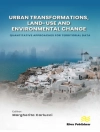In the academic world, the term ‘science communication’ refers both to a set of professions (such as science journalism and public information work) and to an interdisciplinary scholarly research specialization. Much of this research is aimed at improving our understanding of the best ways to communicate complex information, especially to people who are not scientists. Science communication specialists are concerned with giving people useful information about health, environment, and technology – as well as science itself. In order to do this, we also need to improve our understanding of how people think, form opinions, and process information.
Additionally, professional practitioners in science communication are engaged in strategic and ethical decisions every day, such as: How should reporters cover the issue of climate change? Should the views of scientists who do not believe that climate change has been caused by human activity be included alongside the views of those who do, in order to give a ‘balanced’ story, or does this mislead the public into thinking that both of these positions are equally accepted within the scientific community?
The Encyclopedia of Science and Technology Communication provides information on the entire range of interrelated issues in this interdisciplinary field in one place, along with clear suggestions on where to begin the search for more. Geared towards undergraduate and graduate students in journalism, communication, mass communication, and media studies, as well as towards working journalists, public information officers, and public relations specialists, this encyclopedia introduces this vast, fascinating field while challenging the reader to question assumptions inherent in communication across disciplinary boundaries.
Key Themes
- Associations and Organizations
- Audiences, Opinions, and Effects
- Challenges, Issues, and Controversies
- Changing Awareness, Opinion, And Behavior
- Critical Influences and Events
- Global and International Aspects
- Government Agencies (US)
- History, Philosophy, and Sociology of Science
- Important Figures
- Journal Publications
- Key Cases and Current Trends
- Law, Policy, Ethics, and Beliefs
- Major Infrastructural Initiatives
- Practices, Strategies, and Tools
- Professional Roles and Careers
- Public Engagement Approaches
- Theory and Research
- Venues and Channels
Mengenai Pengarang
Susanna Hornig Priest, Ph.D., has taught mass communication theory and research methods at the undergraduate and graduate level beginning in 1989. She holds a doctoral degree in communications from the University of Washington, a master’s degree in sociology from the University of Nevada, Las Vegas, and a bachelor’s degree in anthropology from the University of California at Berkeley. Her own research is centered on the role of science in American society and culture, its expression in the mass media, public engagement in science and science policy, and public opinion formation. She is also interested in the social roles of new media technologies.Priest has served as a member of the Research and Publications committees of the Association for Education in Journalism and Mass Communications and as chair and research chair of the Association’s Science Communication Interest Group. She is a Fellow of the American Association for the Advancement of Science, past associate editor of the journal Public Understanding of Science, and current editor of the journal Science Communication. She regularly serves as an advisor to a wide range of academic projects, government agencies, and private organizations on communication, public engagement, and public opinion issues, and reviews research submissions for a variety of academic organizations and scholarly journals. Her current research is supported by grants from the National Science Foundation and other sources.Her publications include over 30 refereed research articles and nearly 20 book chapters, plus 2 books and the Encyclopedia of Science and Technology Communication, for which she served as General Editor. Currently, she is based in Camano Island, WA, and edits Science Communication.












